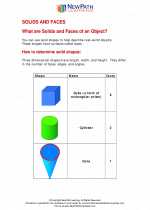Geometric Sequence
A geometric sequence is a sequence of numbers where each term after the first is found by multiplying the previous term by a fixed, non-zero number called the common ratio.
General Form
A geometric sequence can be represented in general form as:
a, ar, ar^2, ar^3, ...
where:
- a = the first term
- r = the common ratio
nth Term Formula
The nth term of a geometric sequence can be found using the formula:
an = a * r(n-1)
where:
- an = the nth term
- a = the first term
- r = the common ratio
- n = the term number
Sum of Terms Formula
The sum of the first n terms of a geometric sequence can be calculated using the formula:
Sn = a * (1 - rn) / (1 - r)
where:
- Sn = sum of the first n terms
- a = the first term
- r = the common ratio
- n = the number of terms
Example
For example, consider the geometric sequence with a first term of 3 and a common ratio of 2. The first few terms of the sequence are 3, 6, 12, 24,...
To find the 5th term, we can use the nth term formula:
a5 = 3 * 2(5-1) = 3 * 24 = 3 * 16 = 48
To find the sum of the first 4 terms, we can use the sum of terms formula:
S4 = 3 * (1 - 24) / (1 - 2) = 3 * (1 - 16) / (1 - 2) = 3 * (-15) / (-1) = 45
.◂Math Worksheets and Study Guides Third Grade. Solids and Faces

 Worksheet/Answer key
Worksheet/Answer key
 Worksheet/Answer key
Worksheet/Answer key
 Worksheet/Answer key
Worksheet/Answer key
 Worksheet/Answer key
Worksheet/Answer key
 Worksheet/Answer key
Worksheet/Answer key
